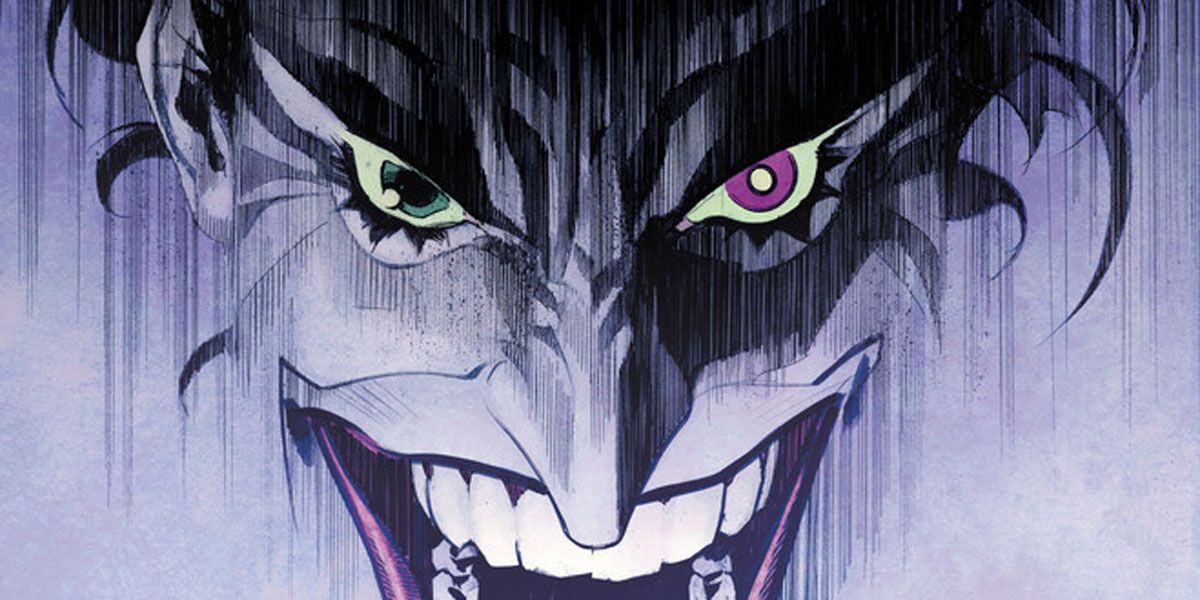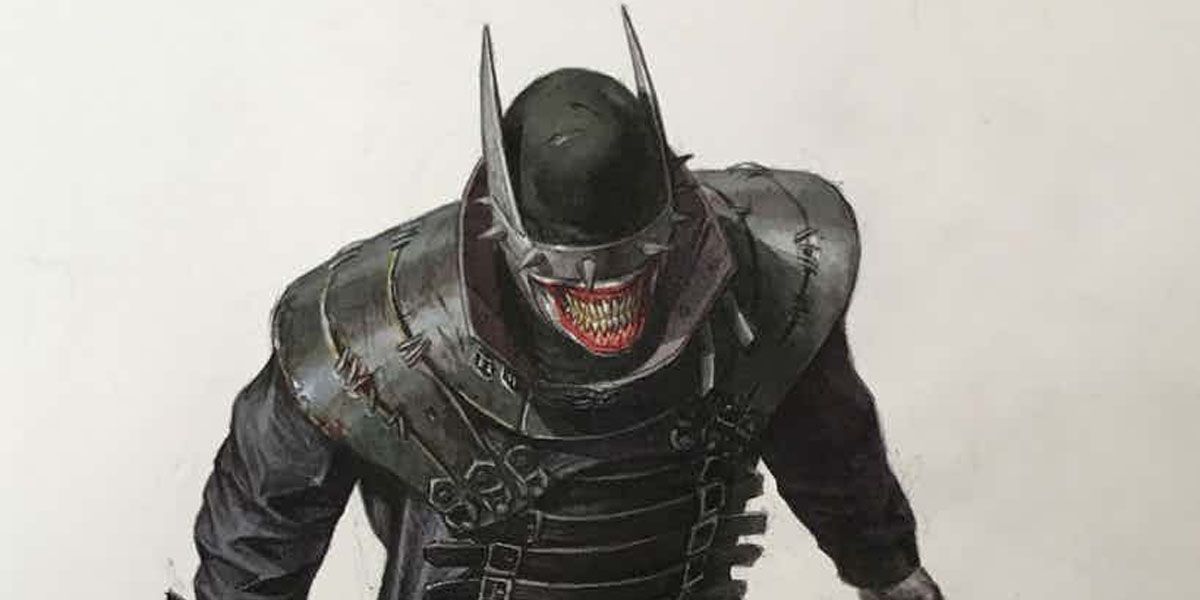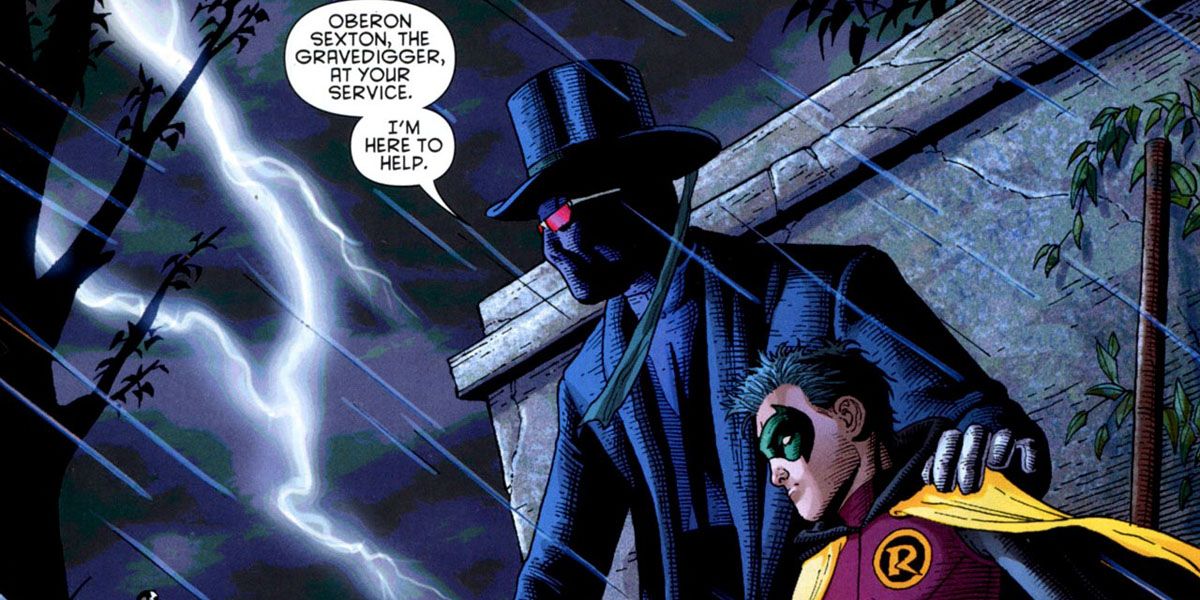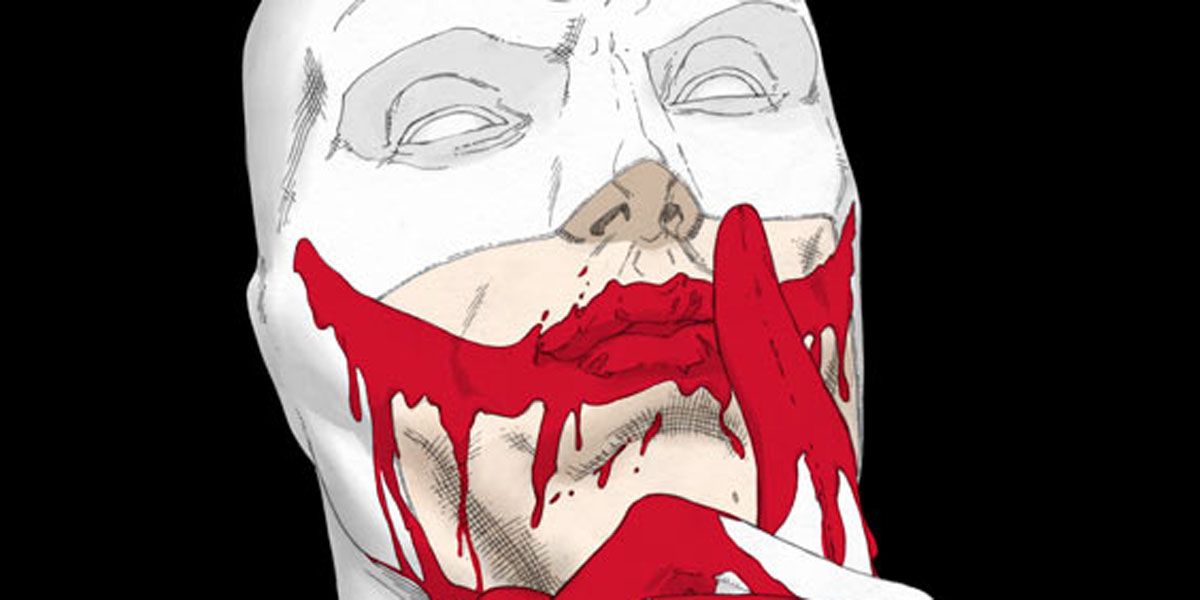Batman and The Joker have long been depicted as dark mirrors of one another, with the Clown Prince of Crime serving as the Dark Knight's shadow self. He's the one who whispers the secrets Batman struggles to keep buried; he's what Batman fears he could become.
Those fears are about to become reality, at least within the DC Universe, both in the unleashing of the Batman Who Laughs in the Dark Nights: Metal tie-in "Gotham Resistance," and in Sean Gordon Murphy's upcoming miniseries Batman: White Knight.
RELATED: Meet the Horrific Robins of the Batman Who Laughs
Announced in June, a series of seven Metal one-shots will introduce the evil Batmen of the Dark Multiverse, including the Batman Who Laughs, a disconcerting melding of the Dark Knight and the Joker. However, we've had hints of such an unholy union, highlighting that the arch-nemeses are, just beneath the surface, one and the same.
One of the first, brief glimpses of that can be found in Grant Morrison and Dave McKean’s Arkham Asylum: A Serious House on Serious Earth. In the 1989 graphic novel, the relationship between the Joker and Batman is depicted to be more than merely a grudging bond between sworn enemies. Here, all the Joker wants is to reveal what the world is to Batman.
Unlike some of Gotham's other villains, the Joker has evolved alongside Batman. He's functioned as the hero's dark twin, even adopting a companion in the form of Harley Quinn. The Dark Knight and the Clown Prince of Crime grew together, and grew apart, throughout the decades, but it wasn't really until Morrison returned to Batman, beginning in the mid-2000s, that we'd see Batman and the Joker as close as lovers.
During the Morrison reign, when the Dark Knight “died,” the Joker stepped up -- wearing an all-black suit -- and began to work as a vigilante, helping the replacement Batman and Robin. He disguised himself as world-famous author and amateur detective Oberon Sexton, and was vital in almost all of the investigations undertaken by Dick Grayson, then in the identity of Batman. At one point, Robin even suspected that Sexton is Bruce Wayne himself, so similar are the two. However, that’s what tips off Grayson that Sexton is actually the Joker, because who else would so closely resemble Wayne?
The Joker winds up killing Batman’s enemy, the almost-unstoppable Doctor Hurt, who is, according to Morrison, the devil himself. The Joker succeeds where even Batman failed, demonstrating the two are more alike than different. And perhaps, if he tried, the Joker might even be a better Batman than Batman.
RELATED: Dark Nights: Metal #1 Annotated, From Gotham's Volcano to Sandman
Now let’s turn to alternate universes, where we can see how thin of a line separates Batman from the Joker, and how easily it can be scratched out. On some versions of Earth-2, the Joker is a hero -- the one man strong and smart enough to hold out against the Crime Syndicate, an evil version of the Justice League. In yet another world, Joker is really nothing more than Bruce Wayne’s trusted father figure Alfred, disguised as a villain in order to give his brokenhearted charge something to fight. In Forever Evil, Alfred and the Joker are the same -- each the closest thing to family the Batman of Earth-3 has.
Even when the world changes, as it did in Flashpoint, their closeness is apparent. There, perhaps more than anywhere else, can you see how much a part of Batman the Joker is. When it's a young Bruce Wayne who dies, his parents Martha and Thomas are thrust apart, and put upon drastically different paths. His father takes up the emblem of the bat, but is a much darker vigilante, and his mother becomes the Joker. Their miniseries ends with the two embracing over the grave of their son.
Then there’s Bob Hall's 1989 Elseworlds story I, Joker, in which the legend of the Batman inspires a cult in a near-future Gotham. There the Joker, a possible descendant of Bruce Wayne, breaks the cult leader's control of the city, and emerges as its hero -- the new Batman.
It's not only in DC comics that we see how seamlessly the Joker and Batman can switch places. Nemesis, the Iconic comic by Mark Millar and Steve McNiven, was initially teased as "What if Batman was the Joker?" Starring a supervillain dressed in white costume not dissimilar to Batman's, the series examines what might happen if the Dark Knight were to fall.
RELATED: The Joker Gets a New Alias in Batman: White Knight
But while Nemesis reimagines the Caped Crusader as a villain, Sean Gordon Murphy's upcoming DC project Batman: White Knight depicts the Clown Prince of Crime as the hero. Debuting in October, the miniseries features the Joker as a folk hero waging a war against a tyrannical Batman. The idea holds an indomitable sway because, the truth is, the Joker works so much better as a hero, and perhaps the Batman as a villain.
That’s part of the source of their friction: the darkness that fills the gap between them. Each sees how perfect and pure the other would be if the other just came to his side. It's undeniable that the two work exceedingly well as partners. After all, it took the two of them to take down the Devil. However, that's not the last time the two would work together.
Even when both are blinded to their realities, they're still there for each other. When the Joker and Bruce meet, both having been healed and resurrected by Dionisium following Endgame, the Joker tries to convince him to give up the life of a vigilante -- because it will only lead to despair. The Joker knows Batman more than, it seems, he even knows himself. That's why when things get truly bleak, Batman turns to the Joker for help.
For a current example, look no further than Dark Days, in which the Joker and Batman have been revealed to be working -- together, in secret -- to save the Multiverse. No one else is trusted by Batman, save the Joker. His white knight. The one who, in Endgame, he embraced in death; the one he held as the life left his body. The one who, in Death of the Family, admitted his love.
Two heroes, two villains, darkness and light, fighting for control of two men locked in endless battle, each trying to "redeem" the other.
We don't yet know what larger role Joker will play Dark Nights: Metal, except that he’s trying to save the universe as Batman damns it. What will the Joker do when he meets a Batman who has fallen? What will the Joker be when he comes face to face with the Batman Who Laughs? And what will Batman see when a dark vision out of his mind comes trembling forth to destroy his world?




